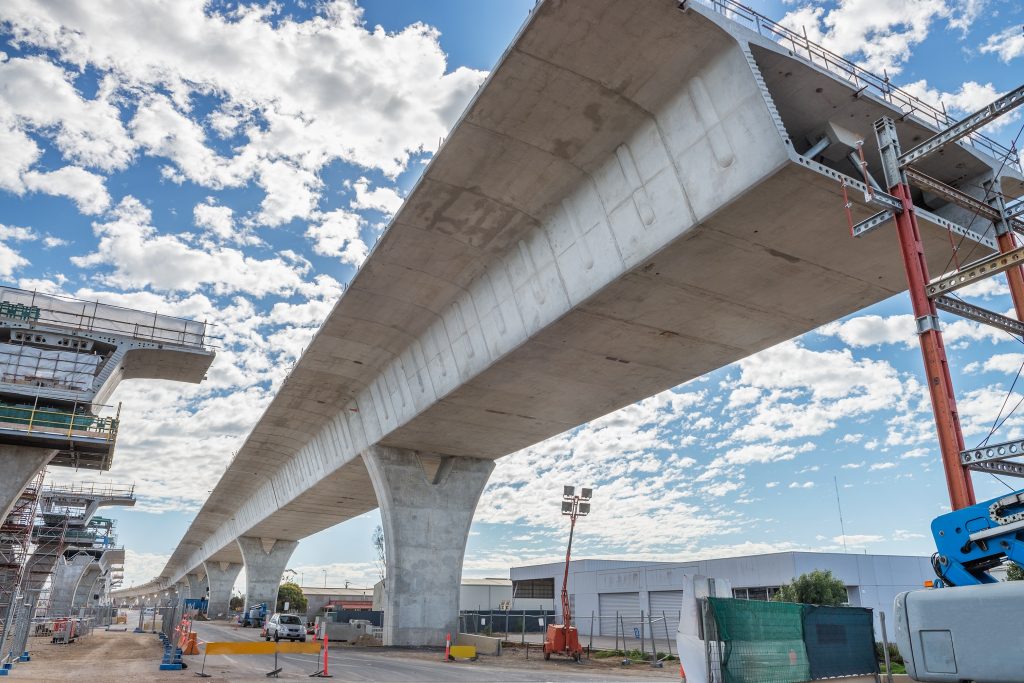By Ines Aviles-Spadoni, M.S., Research Coordinator/Marketing & Communications, UFTI

Millions of people travel on highways and toll roads daily without ever considering the planning, decision-making, and financial decisions that went on in the background before that road was built. To make the construction process more efficient and cost-effective, Dr. Gabriel Castelblanco, an assistant professor at the University of Florida’s M.E. Rinker, Sr. School of Construction Management, has devised a new way to finance toll road projects.
Dr. Castelblanco’s groundbreaking study, “Financial System Dynamics Model for Multidimensional Flexibility in Toll Road PPPs: A Life-Cycle Analysis” published in the recognized Journal Construction Management and Economics; revolutionizes the current financial models available today. The study introduces scope and financial flexibility throughout the project’s life cycle (i.e., pre-construction, construction, operations, and maintenance phases) in toll road Public-Private Partnership (PPP) contracts. This means that the scope of a project can be expanded during the operational phase if necessary, a concept that has been limited in road PPPs according to recent literature. This also means that allowing flexibility with how the project is financed, such as lengthening the time it takes to pay back the money borrowed, is more effective than changing the interest rate.
“This has been proposed in airport PPPs to enhance infrastructure capacity in response to demand fluctuations, but using this approach when contracting long-term road PPPs is limited,” Dr. Castelblanco said. “It has mostly been used in toll lanes managed by the public sector or for PPP expansions rather than being integrated from the beginning in those 20- or 25- years contracts.”
The standard financial practice for toll road PPPs is inflexible, long-term contracts, and this traditional approach has drawbacks. Within five to ten years, there is often a need to expand the toll road after the contract has been approved, which leads to costly renegotiations. However, Dr. Castelblanco’s model offers a more flexible and adaptive approach, potentially saving decision-makers significant costs. Dr. Castelblanco looked at two distinct toll road PPP projects in India and Eastern Europe to test the effectiveness of his model.
Dr. Castelblanco’s model is a tool for toll road decision-makers so that they can make better choices. It will show how any modifications to the construction or to the financing structure will affect costs. Created from the concepts of project finance and systems thinking, the new model will make sure that public and private sector entities don’t overspend on highways or toll roads, and that they build roads that will meet the needs of the citizenry. This approach emphasizes the importance of having a well established scope of the contract early in the planning phase to account for any changes that would occur during the construction phase.
“Airports can expand their capacity by building new terminals, but it’s crucial for decision-makers to have a strategic plan in place before building a highway or toll road,” Dr. Castelblanco said.
Negative impacts include knowing how and when to expand lanes on toll roads to prevent traffic interruptions while ensuring safety for construction workers and drivers. Dr. Castelblanco demonstrated through his proposed model that lane expansions could be strategically planned for construction during extended off-peak periods. The model considers traffic flow, revenues, and CAPEX (i.e., funds used by a company to secure or upgrade physical assets such as property). The approach suggested by Dr. Castelblanco’s model is essential for toll roads that see yearly fluctuations in traffic because decision-makers can proceed with lane expansions with minimal disruptions to traffic flow while ensuring the success of toll-road construction.
So, what does all this mean for you, the road user, or society? Roads connect us to people, places, and things essential to our economy and national security. With Dr. Castelblanco’s innovative research, decision-makers now have a tool to help them efficiently build roads with fewer delays.